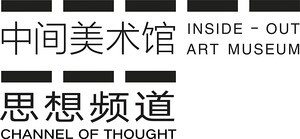Postmodernism and the Global 1980s
April 22–May 21, 2021
798CUBE Art Center
798 East Street, 798 Art District, No. 2 Jiuxianqiao Road
Chaoyang District, Beijing
China
Participating artists and groups: APTART, Włodzimierz Borowski, Andrzej Mitan, Cezary Staniszewski, Tomasz Wilmański, Heidi Bucher, C.A.D.A. (Colectivo Acciones de Arte), Collective Actions Group, Nick Deocampo, Eiko & Koma, Henryk Gajewski, Sanja Iveković, Keizo Kitajima, Lee Bul, M Art Group, Marcel Odenbach, Kenjiro Okazaki, ParCommune, Park Buldong, Tomáš Ruller, David Wojnarowicz
Curators: Liu Ding, Carol Yinghua Lu
Assistant Curator: Huang Wenlong
Visiting Curators: Liu Yusi, Zhang Ligeng
Waves and Echoes: Postmodernism and the Global 1980s presents experimental practices from the 1980s by artists from China, Korea, Japan, the Philippines, the United States, Germany, Switzerland, Poland, the Netherlands, Ukraine, Russia, Czech, Croatia, and Chile, among others. Beneath the apparent lack of a unified vision for art are explosive possibilities that can happen everywhere and anywhere. This is an extension of the exhibition Waves and Echoes: A Process of Re-contemporarization in Chinese Art Circa 1987 Revisited. One central section of the later focuses on a series of “anti-art,” “anti-cultural” or Dadaist artworks and projects, which took place in different Chinese cities between 1986 and 1987.
From the late 1970s to the 1980s, as capital expanded globally and aggravated its infiltration, the cultural logic, intellectual style, and discourse of postmodernism also spread at an increasing speed. The transition provided an opportunity and a conceptual framework to re-evaluate the process of modernization and its philosophical presumptions. The modernist faith in diachrony was unsettled by the postmodernist synchrony. Seen through the postmodernist lens, the boundaries and divides among all categories were dissolving and diminishing. It became possible to revisit and set aside the sequence and narratives that gave meaning to things and events. The art world was undergoing a profound change. Artists broke away from linear historical consciousness and gained freedom. They dug deep into the past, folk cultures, and contemporary times, searching for visual indices without having to ask the meanings of imageries according to their historical sequences and contexts. They raised original philosophical questions through devices of ready-mades and by appropriating existing styles and images. They even deployed appropriation in order to insinuate that originality no longer mattered.
The exhibition takes the discourse of postmodernism as a significant force of global connection in the 1980s and highlights this historical moment during which the international art world formed an enormous community. Having dispelled the myth of a single sequence in art history, however isolated from the world, the existence of meaning defines art, and meaning does not require any special language. Meaning can transcend languages that separate us from each other in other aspects. It is meaning that makes it possible for us to be part of the same world. At least such was the possibility suggested by the artistic landscape of the 1980s.
The inclusive spirit of postmodernism brought forth ideas contrary to the modernist creeds: questioning of progress, an anti-elitist tendency, disbelief in any single theoretical framework, grand narratives or the ultimate interpretation. Postmodernism believes that cultural forms are not homogenous. They cannot be easily defined or controlled. The meaning of postmodernist art lies in simulating the generation of meaning and protects it from its possible termination. Postmodernist art thus becomes a critical and liberating force that frees artists from the autarchy of increasingly self-closed and rigid consensus. It liberates culture from the shackle of metaphysics and its ideological extensions.
While what concerns us here is the symptoms of the postmodernist discourse in the cultural sphere, it cannot be overlooked that its socio-economic basis has been the multi-polarization and trans-nationalization of capital, information and market, as well as the profound shifts in lifestyle, consumption, and social structure. Art in the postmodernist discourse requires us to actively engage with and dive into every specific cultural-political context. A true comparative research of art practices and thinking emerges thereof, instead of isolating them from their concrete settings and projecting them into the realm of the “absolute.”
Channel of Thought is a new program of intellectual practice initiated by Beijing Inside-Out Art Museum. It will present and circulate practices, research, discourse, and thinking led by the museum on various platforms.



